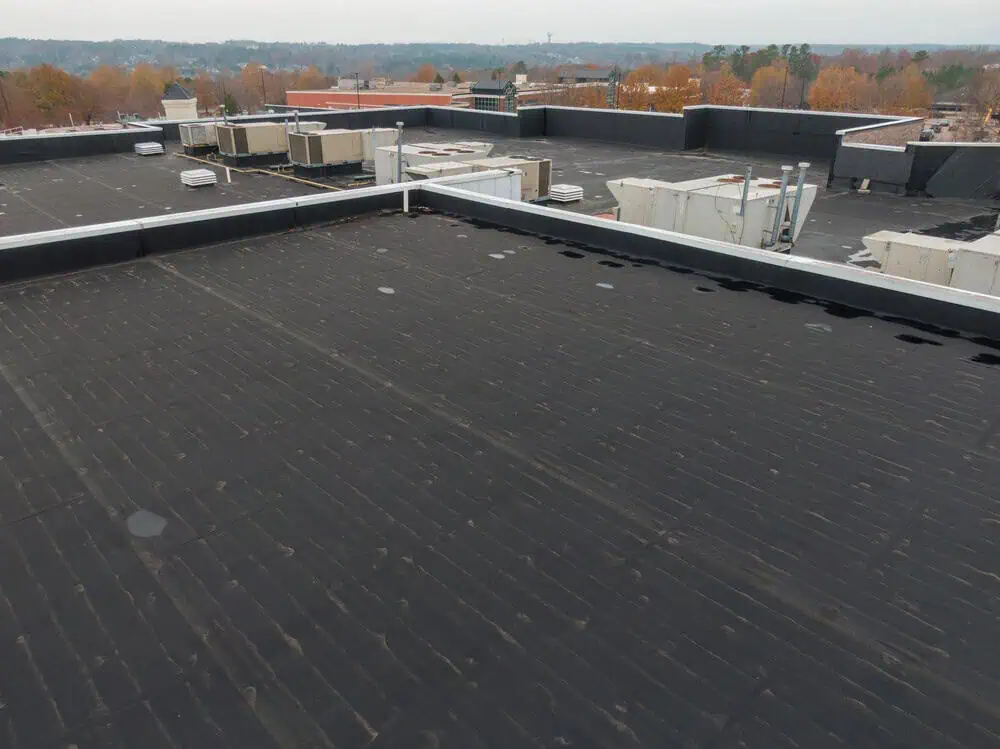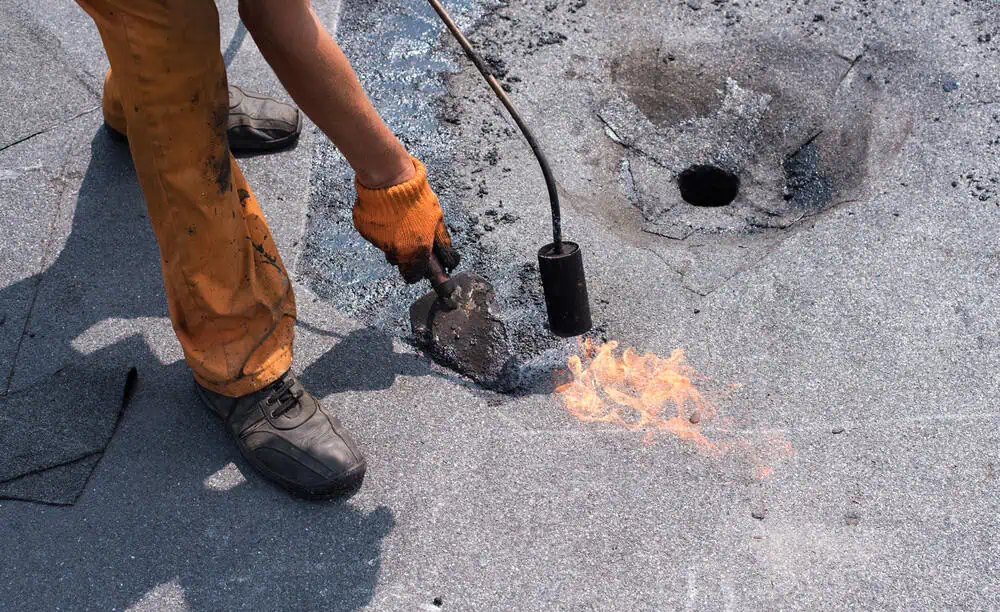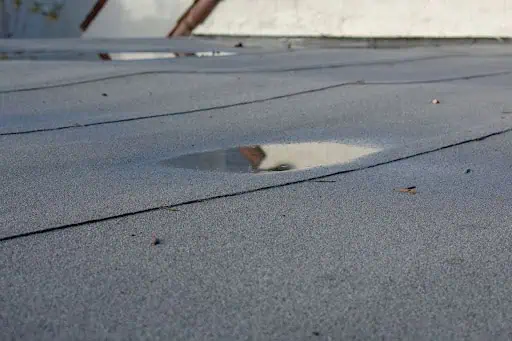For facility managers and building owners, understanding commercial roof repair costs can be tricky. After all, they know it’s important because a damaged or aging commercial roof can disrupt business operations and cause extensive building damage. However, knowing how much to put aside for repairs or a roofing project isn’t exactly as straightforward as they might hope. The final cost of a roof repair will be impacted by several key factors
In this guide, we’ll break down the most important influences on commercial roof repair cost in 2025, including roofing materials, building type, and the condition of the existing roof. While we won’t include any exact cost figures, this analysis will help you better understand the standout elements that most affect pricing and help you plan next roof repair or roof replacement effectively.
1. Key Factors That Influence Commercial Roof Repair Cost
The first thing to understand is that every roofing project is unique, and so are its expenses. However, we can generalize the primary variables that determine the total cost of repairing or replacing a commercial roof. Here are the main considerations for commercial roof repair costs:
Size and Square Footage
This should be common sense. The larger the roof, the more materials, time, and labor are needed to replace it. Most commercial roofs are priced per square foot, so the size of your commercial building is one of the most direct cost drivers.
But, keep in mind that the size of the repair is also a factor, and isn’t based on the square foot. Even in the case of a very large roof, the roof’s size won’t impact the cost of a small repair that doesn’t require buying large amounts of material.
Type of Roof
Your commercial roof’s type and roof structure always play a role in pricing. For example, flat roofs are the most common, and they can be covered with a variety of materials (single-ply, BURs, and mod-bit), while sloped roofs are less common in commercial settings, and they require asphalt shingles or metal roofing.
The height of the roof also matters. Shorter buildings with accessible roofs will be more affordable than the alternative. Tall roofs are difficult to access and may even require a crane to get materials to the top.
Roofing Materials Used
The materials chosen for a roofing repair or replacement are a major factor in the project’s cost. Single-ply materials like TPO, EPDM, and PVC are generally affordable but only suitable for flat roofs. BUR (built-up roofing) systems require several layers of materials and are labor-intensive, which adds up in terms of overall project cost. Standing seam metal roofs are extremely durable and low maintenance, but are some of the most expensive materials you can choose in terms of initial cost.
Each of these comes with its own upfront costs, lifespan, maintenance requirements, and level of energy efficiency. So, balancing the long-term benefits against the initial investment is just as important as the cost of the repair or replacement.
Extent of Damage or Repairs Needed
As mentioned, roofing contractors don’t charge for small repairs based on the roof’s overall size. In this case, they take the size of the actual damage into consideration. Patching minor damage is generally less intensive than a complete tear off and rebuild.
However, if your old roof is structurally compromised or leaking extensively, a full roof replacement may be unavoidable.
2. Repair vs. Replacement: What to Consider
Knowing the difference between when a repair will suffice and when it’s time for a new roof is one of the biggest challenges property managers face. Here are a few considerations:
- Age of the existing roof: If your roof is near or over three decades old, a replacement is probably more cost-effective than making small repairs several times a year.
- Roof’s lifespan vs. current condition: If the roofing system still has usable life left and the damage is localized, a repair may suffice.
- Water intrusion or structural damage: If leaks have reached insulation or decking, tear off and replacement might be necessary to ensure all of the damage is repaired.
Understanding the commercial roof replacement costs involved in each approach will help you make the right call—even if you can’t pinpoint the exact cost without an inspection.
3. Hidden Influences on Commercial Roof Cost
Beyond materials and size, several lesser-known factors affect a commercial roof repair cost. Here are some of the most common price impacts building owners don’t always consider:
- Labor costs (and possible labor shortages) in the area
- Type and condition of substrate materials
- Presence of rooftop HVAC systems, skylights, or other penetrations
- The amount of foot traffic the roof must withstand to service rooftop equipment
- Local climate, regional weather, and energy efficiency demands
- Warranty options and roof warranty terms offered by the roofing company
Each of these can influence both the project’s cost and long-term maintenance requirements.
4. Why Commercial Roof Replacement Costs Are Rising
While we’re not offering average costs, it’s worth noting that commercial roof replacement costs have increased in recent years due to:
- Higher prices for roofing materials
- Increased labor costs
- Stricter building codes and energy efficiency needs
- Ongoing labor shortages
In order to get a cost effective repair or replacement, you need to get an accurate estimate from reputable roofing contractors who understand the needs of your specific roofing system and structure.
5. Planning Your Roofing Project in 2025
If you’re planning a roof replacement or repair this year, keep these tips in mind:
- Work with a trusted roofing company that specializes in your type of commercial roof and building type.
- Schedule inspections regularly to avoid emergency repairs and extensive underlying damage.
- Budget based on the age of your existing roof and expected roof’s lifespan—the older the system, the more expensive the project will likely be.
- Get multiple quotes for a better understanding of your project’s cost.
Consider energy efficiency upgrades and maintenance needs that may offset upfront costs.
Contact TopKey Construction for Your Inspection Today
Determining your commercial roof repair cost in 2025 isn’t as easy as plugging numbers into a calculator. But by understanding the factors that influence pricing—like roofing materials, building type, and labor—you can make better decisions and avoid unexpected surprises. Whether you’re patching a commercial flat roof or exploring full commercial roof replacement, proactive planning is your best tool for staying on budget and protecting your property.
If your roof is in need of attention, whether it’s a repair or replacement, contact TopKey Construction today. We’re experts in the world of commercial roofing materials and we understand what it takes to protect buildings with flat or sloped roofs, or anything in between. Our team of installers has over 35 years of experience with commercial roof systems, including inspections, replacements, and repairs.


